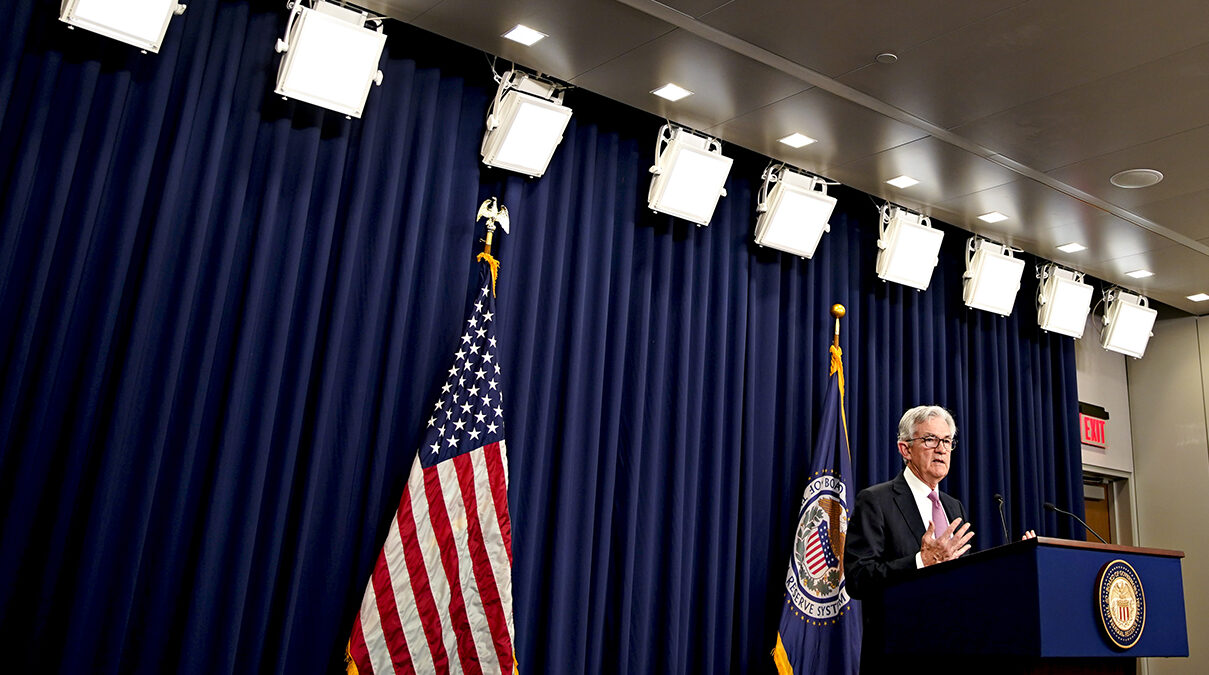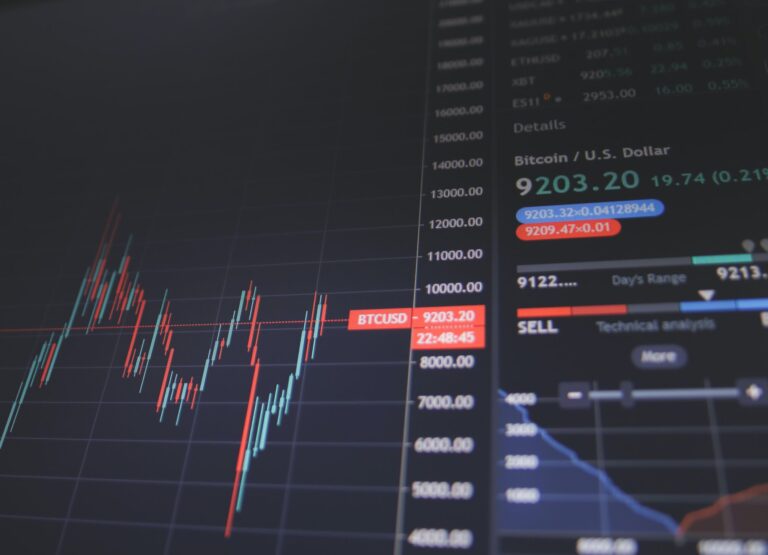The Federal Reserve plays a crucial role in managing the economy, including setting interest rates to control inflation and stimulate economic growth. In recent months, there have been growing concerns about rising inflation, prompting the Federal Reserve to take action. While the Federal Reserve had been gradually raising interest rates to combat high inflation, it recently decided to keep its key interest rate unchanged. However, this does not mean that the Federal Reserve is done addressing inflation. In fact, it has signaled that there may be more rate hikes to come. The Federal Reserve’s stance on interest rates is closely watched by investors and market participants, as it can have a significant impact on the economy and financial markets.
The Federal Reserve’s commitment to maintaining price stability is evident in its efforts to combat inflation. The central bank recognizes the importance of keeping inflation in check to ensure a healthy and stable economy. In its current target, the Federal Reserve aims for inflation to average around 2% per year over the long term. This commitment is reflected in the Federal Reserve’s decision to raise interest rates and tighten monetary policy, as higher interest rates can help curb inflationary pressures. The Federal Reserve’s actions are driven by its mandate to promote maximum employment and stable prices. By closely monitoring inflation and adjusting interest rates accordingly, the Federal Reserve aims to strike a balance between supporting economic growth and preventing runaway inflation.
The Federal Reserve’s recent decision to keep interest rates unchanged while signaling the possibility of more rate hikes reflects its ongoing battle against stubborn inflation. The central bank recognizes the need to address inflationary pressures and prevent them from eroding the purchasing power of consumers and undermining economic stability. The Federal Reserve’s approach to managing inflation is a delicate balancing act, as it must carefully consider the potential impact of interest rate changes on various sectors of the economy, including housing, borrowing costs, and business investment. As the Federal Reserve continues to monitor economic data and assess the trajectory of inflation, it will make further decisions regarding interest rates to maintain price stability and support sustainable economic growth.
The impact of interest rate hikes on the economy
One of the primary impacts of interest rate hikes by the Federal Reserve is the effect on borrowing costs for consumers and businesses. As the Fed raises interest rates, the cost of borrowing money increases, making it more expensive for individuals and businesses to take out loans. This can have a significant impact on consumer spending and business investment decisions. Higher borrowing costs may discourage individuals from taking on new debt, leading to a decrease in consumer spending. Similarly, businesses may be less inclined to invest in new projects or expand their operations if the cost of borrowing becomes too high. Therefore, interest rate hikes can have a direct impact on the borrowing capacity and financial decisions of consumers and businesses.
Another key impact of interest rate hikes is on investment and economic growth. When interest rates rise, it becomes more expensive for businesses to borrow money for investment purposes. This can lead to a decrease in business investment, as companies may delay or scale back their plans due to the higher borrowing costs. Consequently, a decline in business investment can have a negative effect on economic growth. Lower levels of investment can result in reduced job creation, decreased productivity, and slower overall economic expansion. Therefore, the decisions made by the Federal Reserve regarding interest rates can have significant implications for the health and growth of the economy.
Interest rate hikes can also have potential implications for the housing market. Higher interest rates can make mortgages more expensive for homebuyers, potentially reducing the affordability of homes. This can lead to a decrease in demand for housing, which may result in a slowdown in the housing market. Additionally, existing homeowners with adjustable-rate mortgages may face higher monthly payments as interest rates increase, potentially putting financial strain on some households. However, it is important to note that the impact on the housing market may vary depending on factors such as the overall strength of the economy and local market conditions. Nonetheless, interest rate hikes by the Federal Reserve can influence the dynamics of the housing market and the affordability of homeownership.
Factors influencing the Federal Reserve’s decision to raise interest rates
The Federal Reserve’s decision to raise interest rates is influenced by various factors, including an analysis of inflation data and indicators. The Fed closely monitors inflation levels to ensure price stability and prevent excessive inflationary pressures. Inflation data, such as the Consumer Price Index (CPI) and Producer Price Index (PPI), provide insights into the overall price levels in the economy. If these indicators show a sustained increase in prices, the Fed may decide to raise interest rates to cool down the economy and curb inflation. By raising rates, the Fed aims to slow down economic growth, which can help mitigate inflationary pressures.
Another factor that influences the Federal Reserve’s decision to raise interest rates is the state of the labor market. The Fed closely monitors unemployment rates and labor market conditions to assess the strength of the economy. When the labor market is tight, with low unemployment rates and high demand for workers, it can lead to wage pressures and potentially contribute to inflationary pressures. In response, the Fed may raise interest rates to prevent the economy from overheating and to maintain a balance between employment and price stability.
Additionally, global economic factors play a role in shaping U.S. monetary policy. The Federal Reserve takes into account global economic conditions and their potential impact on the U.S. economy. Changes in global growth, trade tensions, and financial market developments can influence the Fed’s decision-making process. For example, if global economic conditions are deteriorating, the Fed may decide to lower interest rates to stimulate economic growth and mitigate the potential spillover effects on the U.S. economy. On the other hand, if global inflationary pressures are rising, the Fed may raise interest rates to prevent imported inflation from affecting the domestic economy. The Fed’s decisions regarding interest rates are carefully considered and take into account a range of economic indicators and global factors to ensure the stability and health of the U.S. economy.
Market reactions and investor sentiment in response to the Federal Reserve’s announcements
The Federal Reserve’s announcements regarding future interest rate hikes have had a significant impact on market reactions and investor sentiment. One notable effect has been increased stock market volatility and investor uncertainty. When the Fed signals more rate hikes, it can create uncertainty in the stock market, leading to mixed reactions among investors. The anticipation of higher interest rates can cause fluctuations in stock prices as investors try to assess the potential impact on corporate earnings and economic growth. This volatility can make it challenging for investors to make informed decisions and can contribute to market instability.
The Federal Reserve’s decisions on interest rates also have implications for bond yields and fixed-income investments. When the Fed raises interest rates, it can lead to higher bond yields, making fixed-income investments more attractive to investors. However, this can also result in lower bond prices, as the existing bonds with lower yields become less desirable. The impact on the bond market can create opportunities and risks for investors, depending on their investment strategies and goals. It is important for investors to carefully assess the potential impact of interest rate hikes on their fixed-income portfolios and adjust their investment strategies accordingly.
The market’s expectations for future interest rate hikes play a crucial role in shaping investor sentiment. When the Federal Reserve signals its intention to increase interest rates, it sends a signal to the market that it is taking action to combat inflation. This can have both positive and negative effects on investor sentiment. On one hand, it can provide reassurance to investors that the central bank is actively addressing inflationary pressures and maintaining price stability. On the other hand, it can create concerns about the potential impact of higher interest rates on borrowing costs and economic growth. Investors closely monitor the Fed’s statements and actions to gauge the direction of interest rates and adjust their investment strategies accordingly.









+ There are no comments
Add yours